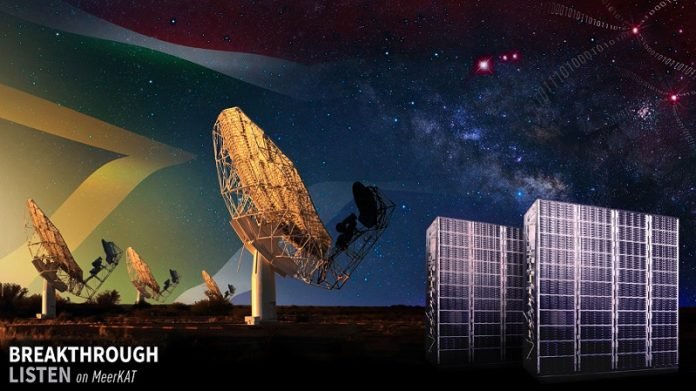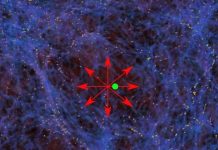
Breakthrough Listen, a privately funded project seeking evidence of extraterrestrial intelligence, has started operations on the MeerKAT radio telescope array in South Africa.
Over the next two years, the team will search over a million nearby stars, expanding the number of targets observed by a factor of 1000.
“I am very excited to be able to conduct a search for technosignatures using one of the most sensitive telescopes in the world,” says Breakthrough Listen’s MeerKAT Project Scientist, Dr. Cherry Ng.
“MeerKAT will provide us with the ability to detect a transmitter akin to Earth’s brightest radio beacons out to a distance of 250 light years.”
There are about 260,000 stars within that range. For stars further away, the search becomes more difficult, but there is still a chance of detecting signals from distant sources.
The Search for Extraterrestrial Intelligence (SETI) has the unenviable position of rarely receiving government research funding. NASA has largely avoided SETI research since the cancellation of its planned High Resolution Microwave Survey back in 1993.
SETI’s (sometimes unfair) association with conspiracy theories occasionally overshadows its potential to answer one of the biggest questions humanity can ask: are we alone in the Universe?
But private funding from billionaires Julia and Yuri Milner have given SETI a boost in recent years.
Breakthrough Listen operates using the Green Bank Telescope in the USA and the Parkes Telescope in Australia, among others.
MeerKAT is the latest addition. MeerKAT’s array of 64 dishes can see an area of sky 50 times bigger than the Green Bank telescope, making it an exceptional tool for surveying broad swaths of the nearby galactic neighborhood.
Importantly, Breakthrough Listen’s software on MeerKAT enables them to operate in ‘commensal mode,’ meaning they piggyback onto the telescope and can carry out their search for technosignatures without interfering with the observing time of other astronomers.
“Such a large field of view typically contains many stars that are interesting technosignature targets,” says Breakthrough Listen’s Principal Investigator Dr. Andrew Siemion.
“Our new supercomputer enables us to combine signals from the 64 dishes to get high resolution scans of these targets with excellent sensitivity, all without impacting the research of other astronomers who are using the array.”
One of the first targets Breakthrough Listen will observe with MeerKAT is Proxima Centauri, a nearby star with two known rocky planets in the habitable zone.
Astronomers have competing opinions regarding whether there are technological civilizations out there to find. One camp suggests that if they were out there, we would have seen them already.
That is the premise of the Fermi Paradox, which proposes that life is likely common elsewhere in the Universe, so it is strange we’ve yet to see any yet. The famous Drake equation, formulated in 1961, tries to mathematically distill the Fermi paradox into concrete probabilities for finding life elsewhere.
So far, there are no signs of ET. The occasional oddity, like the ‘Wow! signal’ in 1977, have failed to be repeated in follow-up studies.
These oddities are, at best, inconclusive hints that something else is out there. Alternatively, they often prove to be signals from elsewhere on Earth, misunderstood as extraterrestrial in origin.
The premise of Breakthrough Listen is that if we don’t look, we won’t get an answer. MeerKAT’s powerful capabilities will make that search more thorough. Only time will tell what they find, or don’t find.
Written by Scott Alan Johnston.
Source: Universe Today.



